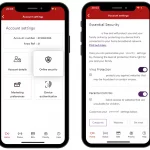Hyperoptic Appoint Ex-Virgin Media UK Veteran Sam Horrocks as New CFO

City-focused broadband ISP Hyperoptic, which has spent the past few years rolling out their own full fibre (FTTP/B) network to cover 1.9 million UK premises and is also in the process of onboarding via Openreach’s network (here), this week announced that they had appointed Sam Horrocks to take on the role of Chief Financial Officer (CFO).
The operator, which is currently home to 400,000 active subscribers and recently suffered another round of redundancies, is currently going through somewhat of a strategic shift that has seen their own network build switch to focus more on commercialisation. On top of that, they’re also now working toward reaching the rest of the UK by harnessing Openreach’s growing national FTTP network (due to start becoming available from early 2026).
Suffice to say that there’s a lot of change happening within Hyperoptic right now. As part of that, they’ve appointed a new CFO to replace Richard Woodward, who after 4 years at the provider recently resigned in order to “make a change from a life-long telecom industry career to join the amazing team at Neko Health” as their CFO.
Advertisement
By comparison Sam is said to have a strong track record as a finance leader in telecoms, tech and private equity-backed businesses and brings over 25 years of experience in driving performance and growth at companies including Vodafone, Inmarsat and, most recently, as Deputy CFO of Travelport. One of his longest stints was the nearly 14 years he spent at Virgin Media, occupying various strategy and senior financial roles.
Dana Tobak CBE, CEO and co-founder of Hyperoptic, said:
“This is an exciting time for Hyperoptic as we continue our upward trajectory of growth and innovation. Sam’s strong background in financial planning, business partnerships and commercial and operational delivery makes him the ideal fit for this role.”
Sam will no doubt find quite the challenge in navigating today’s highly competition and consolidation prone broadband market. But being the CFO of a well-established alternative network like Hyperoptic isn’t a bad place to start.
Mark is a professional technology writer, IT consultant and computer engineer from Dorset (England), he also founded ISPreview in 1999 and enjoys analysing the latest telecoms and broadband developments. Find me on X (Twitter), Mastodon, Facebook, BlueSky, Threads.net and Linkedin.






















































Is there any way to verify this 1.9 million claim? Because thinkbroadband seems to disagree massively
@sam
The 1.9 m figure is Hyperoptic’s own “homes passed” count, which can include premises awaiting final sign-off or wayleaves. thinkBroadband uses stricter “ready for service” criteria, which is why their figure is closer to 1.3 m. Both numbers are accurate — they’re just measuring different stages of rollout
It is misleading then because for every other operator Mark reports the actual numbers, not the company’s inaccurate made up numbers to lie about being bigger than Community Fibre. If something needs a wayleave then it is meaningless to count as no one can get a service
I generally report the official claims, but then write occasional articles or updates to highlight the gap between those claims and what can be independently measured. Not easy when every operator seems to define its own criteria for things and yet doesn’t always say what that is.
@sam
I get where you’re coming from — if a property can’t actually order, it’s not meaningful for the end user. But “homes passed” is an industry-wide metric, and every operator publishes it (even if the public perception is that it’s the same as RFS). The gap between that and thinkBroadband’s RFS figure is why I mentioned both — one shows engineering footprint, the other shows where people can actually sign up. It’s not unique to Hyperoptic, even if the marketing spin can make it feel that way.
Also Mark always reports the numbers presented to him. As above this is nothing new, City Fibre, go fibre and many others do this. Even VM are doing it. I wouldn’t get too bogged down on it. It happens is it right? No absolutely not.
I’d be more worried about the build quality.
It is just an attempt at fudging the numbers, especially in this case where the useless “near the network” figure is 50% higher than the actual number. No other altnet does this
25 years and at LEAST 4 companies, does not appear there’s much loyalty in high up positions. A generalisation that a number of big company directors must either be really good and constantly head hunted or know when to quit BEFORE the proverbial hits the fan.
@Just a thought
Four companies in 25 years actually works out at over six years per role, which is a solid tenure in today’s market — especially for senior leadership where the average is often under five. CFO moves can be driven by company life cycles, strategic changes, or growth opportunities rather than “jumping ship” when things go wrong.
Also for context, the average employee today stays at a company about 4.1 years according to recent data.
Now, just because you leave a company, does not mean you are still not friends with ex-colleagues inside the company you left.
Just speaking hypothetically, VM want ALTNETS. A staff member clued up on finance leaves and resides in a fairly big ALTNET and gets to know the insides financially. Conspiracy theory maybe.